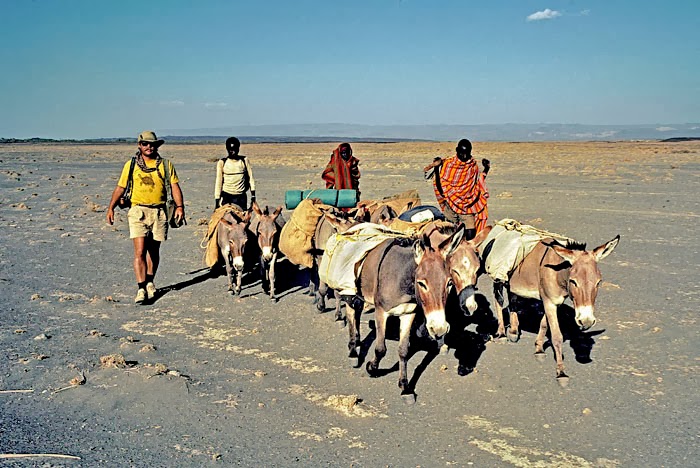In 1991 my American friend Jeff Barr and I explored the Suguta Valley,
south of Lake Turkana. A sweltering semi-desert at the bottom of Kenya’s share
of the Great Rift Valley, it’s one of the world’s hottest regions. Much of our pack
donkeys ‘loads consisted of drinking water.
The valley was peopled by Turkana nomads. In 1973 I had photographed
that tribe for a National Geographic
book chapter. This time I wanted extra pictures of them for my own book, Wind, Sand and Silence: Travels with Africa’s
Last Nomads, which Chronicle Books
would publish the following year.
Jeff had been a teacher at the American school in Cali, Colombia, where
two of my children were studying. Coincidentally, we met again in Nairobi after
he had had to leave his last teaching job in Mogadiscio, Somalia, after the
American Embassy there had been attacked. He, too, was looking for an adventure, and I
could not have dreamed of a better companion.
--
En 1991 mon ami
Jeff Barr et moi explorâmes la vallée du Suguta au sud du lac Turkana ouu sa rivière
débouche. Ce semi-désert, au fond de la grande faille d’Afrique dans sa portion
du Kenya, est une des régions les plus oppressivement chaudes du monde. La charge de nos ânes de bât
consistait principalement d’eau.
La région est peuplée
de Turkana. En 1973 j’avais photographié ces nomades pour un chapitre de livre
de la National Geographic Society.
Cette fois je voulais ajouter à mes premieres photos pour mon propre livre, Wind, Sand and Silence : Travels with
Africa’s Last Nomads. que publierait Chronicle
Books l’année suivante.
Jeff avait été professeur d’une école américaine de Cali, en Colombie, ou deux de mes enfants étudiaient. Coincidemment, nous nous retrouvâmes à Nairobi. Il venait de fuir son nouvel emploi, dans une école américaine de Mogadiscio, en Somalie, après une attaque à l’ambassade américaine. Comme moi il cherchait une aventure. Et je n’aurais pu rêver d’un meilleur compagnon de voyage.









